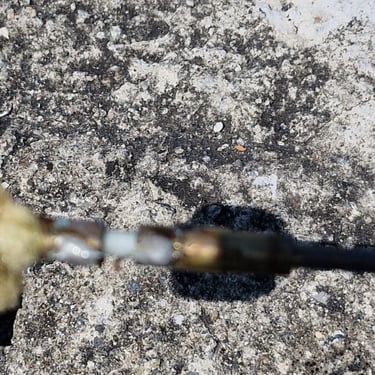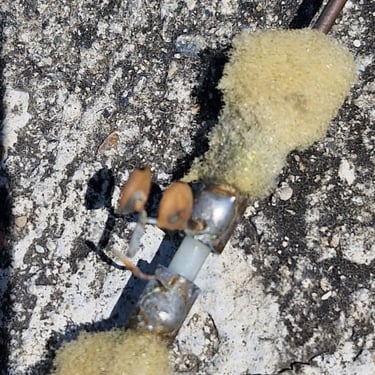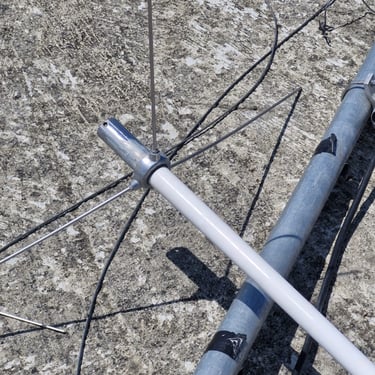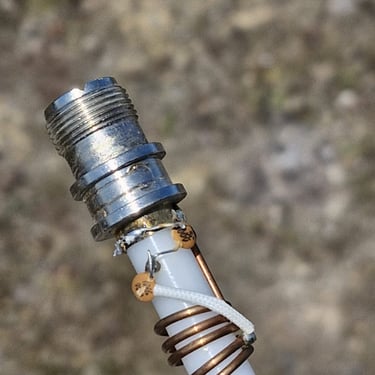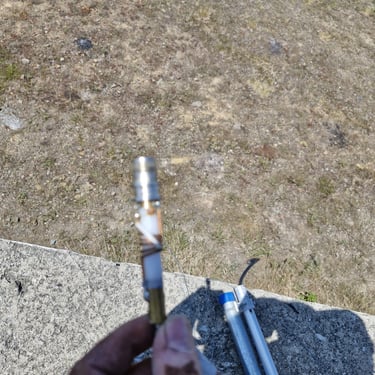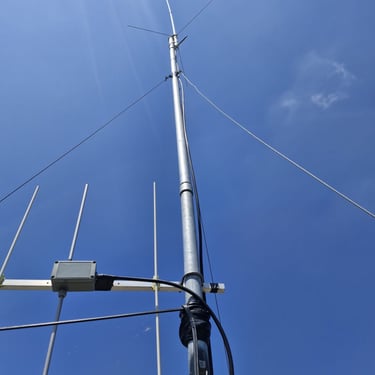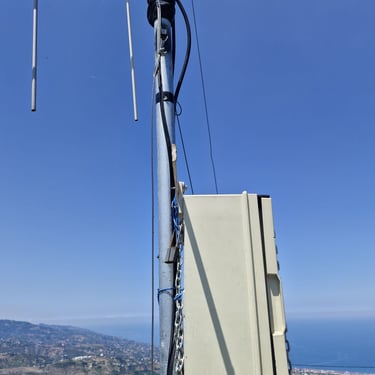📡 VHF/UHF Band Transceiver Antennas
📡 VHF/UHF Band Transceiver Antennas & SWR: A Comprehensive Guide ✍️ Written by: TB7AEK Ayberk Efe Korkmaz
AYBERK BLOG
📡 VHF/UHF Band Transceiver Antennas & SWR: A Comprehensive Guide
✍️ Written by: TB7AEK Ayberk Efe Korkmaz
📶 Introduction
The VHF (Very High Frequency) band (30–300 MHz) and UHF (Ultra High Frequency) band (300–3000 MHz) are extensively used for amateur radio, emergency communications, military, maritime, and commercial applications.
In these frequency ranges, choosing the right antenna can significantly affect the performance of your transceiver system. Additionally, the SWR (Standing Wave Ratio) is a critical measure that indicates the impedance match between the transmitter and the antenna system.
📡 Antenna Types (For VHF/UHF)
🔸 1. Dipole Antenna
Simple and effective.
Typically cut to half of the resonant wavelength.
Application: Stationary setups, basic testing, indoor use.
🔸 2. GP (Ground Plane) Antenna
A ¼ wavelength vertical element with 3-4 radials extending from the base.
Widely used in mobile and base station installations.
Known for its low SWR tolerance and ease of construction.
🔸 3. Yagi Antenna
A directional antenna.
Consists of a reflector, driven element, and multiple directors.
Application: Weak signal reception, long-distance communication.
🔸 4. Collinear Antenna
Vertical array of multiple elements stacked for increased gain.
High-gain antenna, especially for repeater systems and high towers.
🔸 5. Helical and Patch Antennas (Specific to UHF)
Patch: Low-profile, directional, often used for indoor systems.
Helical: Spiral-shaped, directional, commonly used in UHF and beyond.
📐 What is SWR? (Standing Wave Ratio)
SWR is a numerical ratio that indicates the power matching between your transmitter and antenna system.
Ideal value: 1.0:1 (all RF power is transmitted efficiently to the antenna).
Commonly accepted values:
🟢 1.0–1.5:1 → Excellent
🟡 1.5–2.0:1 → Acceptable
🔴 2.0+:1 → High power loss, possible damage to your equipment!
🔍 Causes of High SWR
Incorrect antenna length
Poor connector soldering
Moisture or damage to the coaxial cable
Poor grounding
Environmental factors causing detuning
🛠️ How is SWR Measured?
Use an SWR meter or a Vector Network Analyzer (VNA).
Calculated from the "Forward" and "Reflected" power readings.
📏 Choosing VHF/UHF Antennas – Key Criteria
CriterionExplanationFrequency RangeVHF: 144–148 MHz, UHF: 430–440 MHz (for amateur use)GainMeasured in dBi or dBd. Yagi and Collinear offer high gain.Mounting LocationIndoor, outdoor, mobile, or portable setupsRadiation PatternOmni (all directions) or directional antennasDurabilityProtection from UV, wind, moisture, and mechanical shockPortabilityHandheld transceiver antenna or base station setup
🔌 Coaxial Cable Selection
Coaxial cables are critical in connecting the transmitter and antenna. In UHF systems, cable losses become very important.
Recommended Cables:
Cable TypeMax FrequencyLow Loss?ApplicationRG-58~500 MHz❌Short distances onlyRG-213~1 GHz✔️Medium-range applicationsLMR-400>2 GHz✔️✔️For UHF & high-performance
🧪 Practical Antenna Tips
📏 Calculate antenna length based on the λ (lambda) wavelength:
Length (m)=300Frequency (MHz)\text{Length (m)} = \frac{300}{\text{Frequency (MHz)}}Length (m)=Frequency (MHz)300
⚠️ Avoid placing antennas near metal structures; open spaces yield the best results.
📐 Antenna height = Range
🔄 Even a 10–20 cm change in antenna position can affect SWR!
🧭 Example Applications
📻 1. Handheld Transceiver (HT):
¼ wave rubber duck antenna
Typical SWR: 1.5–2.0 (due to poor ground plane)
🚗 2. Mobile Transceiver:
5/8 wave magnet mount antenna
SWR: 1.2–1.5 with proper tuning
🏠 3. Fixed Base Station:
2x5/8 collinear antenna, tower-mounted
SWR: 1.1, ideal for low loss
🧾 Conclusion
In VHF/UHF communication systems, choosing the correct antenna and maintaining low SWR is crucial for achieving optimal transmission performance and safeguarding your equipment. Antenna design, placement, and coaxial selection directly impact your system’s efficiency.
As amateur radio operators, implementing these technical insights ensures that we communicate clearly and effectively with stations far and near. 📡
✍️ Author:
TB7AEK Ayberk Efe Korkmaz
